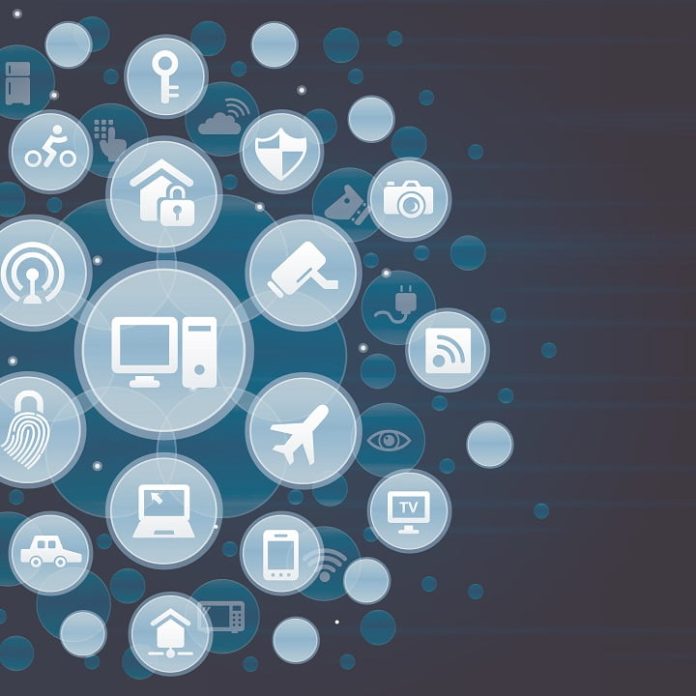The global internet of things is coming, driven by demographics, as well as by the pursuit of new revenue streams. Is the electronic security industry ready? Surprisingly so, and may benefit in multiple ways.
WHEN it comes to phrases of jargon, there’s nothing quite so popular in the technology sector right now as the internet of things. The nature of this ecosystem, its topology and any functional form of user interface remain utterly nebulous. Given the glacial uptake of proprietary cloud, the concept of socialist cloud may well be beyond the bounds of a coherent business model. Even its acronym is annoying.
But regardless of the aspects that are unexplained about the nature of the IoT, the thing is claimed to be growing and will increase in size at a 26.5 per cent compound rate through until 2019, according to Infiniti Research. What’s driving growth are demands to leverage generated data that might enhance customer feedback, reduce costs, improve services and increase revenue. There’s also a push towards a different sort of workforce, with more automation and an increase in the number of smart devices. Infiniti says countries have realized that sensor data could help avoid catastrophic failures in key infrastructure networks like water, power and transport.
Is any of this possible? For the electronic security industry, it certainly is. This might seem like a stretch but in Australia a number of city and regional councils are seeking to add video and audio analytics to public surveillance systems that will improve their ability to respond to events across larger systems or systems that are not monitored in real time. Meanwhile, in smart cities, multiple authorities already share data from surveillance systems, infrastructure providers and utilities in order to expand their reach.
More and more we see local and enterprise electronic security applications that integrate all access points, all alarm inputs, and multiple subsystems, as well as process control systems with surveillance cameras, the whole being centrally monitored. Management systems are being optimised to handle this. Genetec’s latest version of Security Center springs immediately to mind and it’s hard not to think of the capabilities of Bold Manitou when considering such broad applications, as well as C-Cure, Honeywell and others.
A fundamental that makes the electronic security industry so ripe for IoT is that its core nature is IoT. In electronic security systems, networks of sensors pass data to controllers where it can be accessed by remote workstations or gathered by servers and collated for actioning, management and reporting locally or remotely by any authorised,connected user. If you add CCTV cameras, flood sensors, smoke sensors, carbon monoxide sensors, vibration sensors, medical alerts, access control readers and relays, and process control over multiple sites, you can see that a fully expanded security solution is a micro (local) or macro (enterprise) expression of IoT.
What are the enablers that might take electronic security solutions to the next level – a shared internet of all our things? Infrastructure capable of supporting ubiquitous cloud is the first thing. An expanded concept of IoT involves the cameras, sensors, controllers and servers/workstations of multiple systems working together as part of as-yet unconceived cloud-based applications. Would multiple end users share sensor data within the constraints of security monitoring facilities? They might.
But in the same way it is challenging for alarm and automation panel manufacturers who bring together groups of sensors into an app, trying to wrangle vast amounts of sensor data across multiple sites in a meaningful way outside the structure and control of a single organistion is going to be seriously challenging. Some people might be willing to share data gathered by their sensors, others will not be so eager. But in many ways, that’s a moot point.
To my mind, what’s great about IoT is the concept itself. If this concept of using camera and sensor data to inform decisions from any networked location becomes clearer in the minds of domestic and commercial users there may be considerable advantages for the electronic security industry and the monitoring companies that support them. As things stand, the monitoring sector needs to strengthen the case for 24-hour alarm monitoring. With expanded systems, the ability to monitor internal and external detection zones, door sensors, smoke sensors, flood sensors, temperature sensors, carbon monoxide sensors, VMD events and medical alerts 24 hours a day across mulitple sites would be a great advantage.
In many ways companies like Honeywell, DSC, Ness, Risco, 2GIG and others already facilitate micro IoTs in every location in which they are installed. But despite the capability of existing technology, really clever and highly integrated automation solutions are rarely to be seen. The trouble is, only a very small number of systems are installed with these sorts of detection capabilities. Sad to say, most modern alarm systems have a small number of fairly basic PIRs – they might be dual pyro if you’re lucky – and it’s at this basic level of detection that DIY systems and bundled telco solutions are going to be able to compete.
The greatest challenges of the global IoT are going to be accessing data from multiple users and then presenting it in a form that is secure, authorised, coherent and useful. That does not mean the general concept of IoT is not a place the electronic security should be very ready to promote. At a fundamental level, electronic security systems arrived at the future decades ago but we're still waiting for users to catch up. ♦
By John Adams










